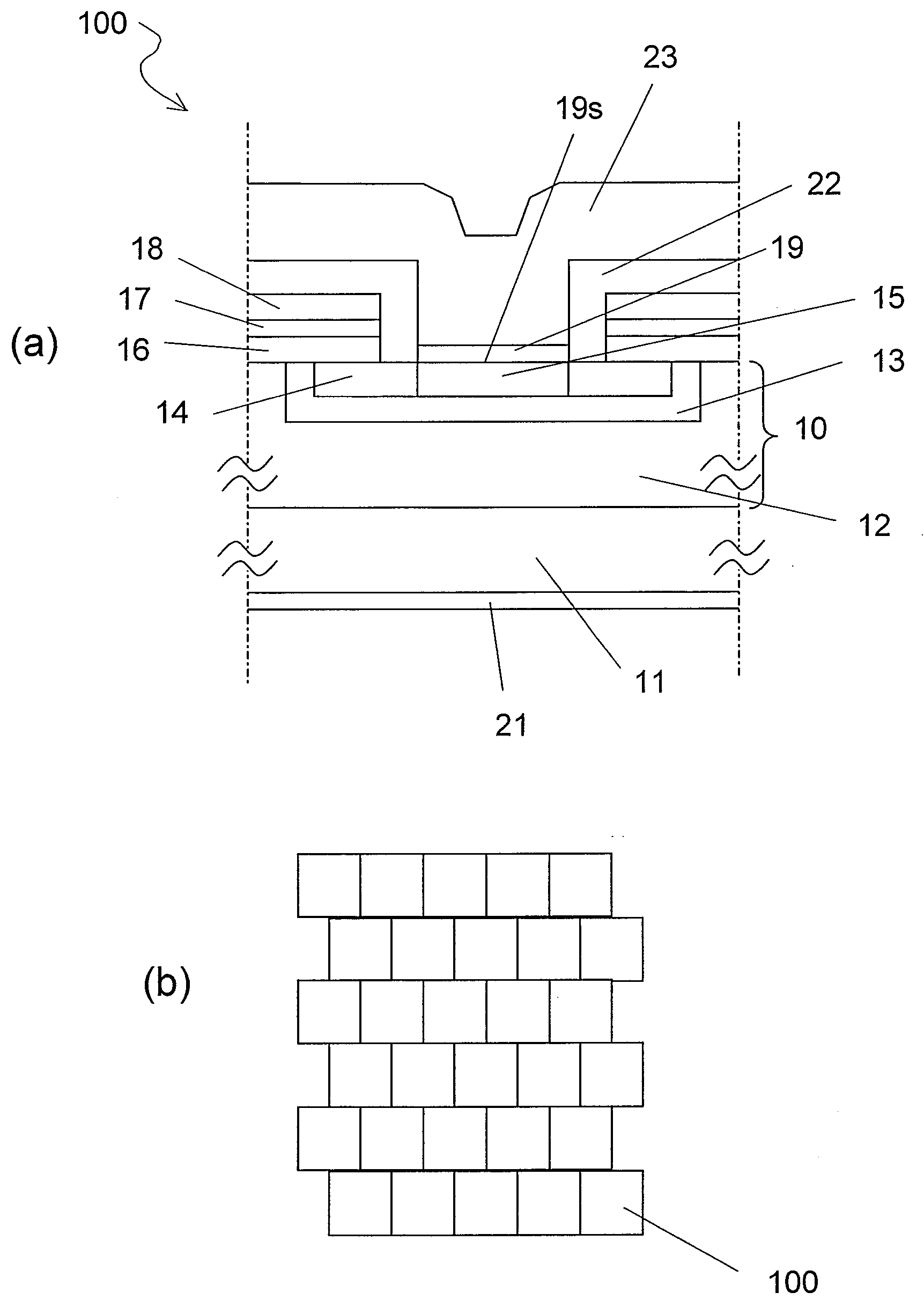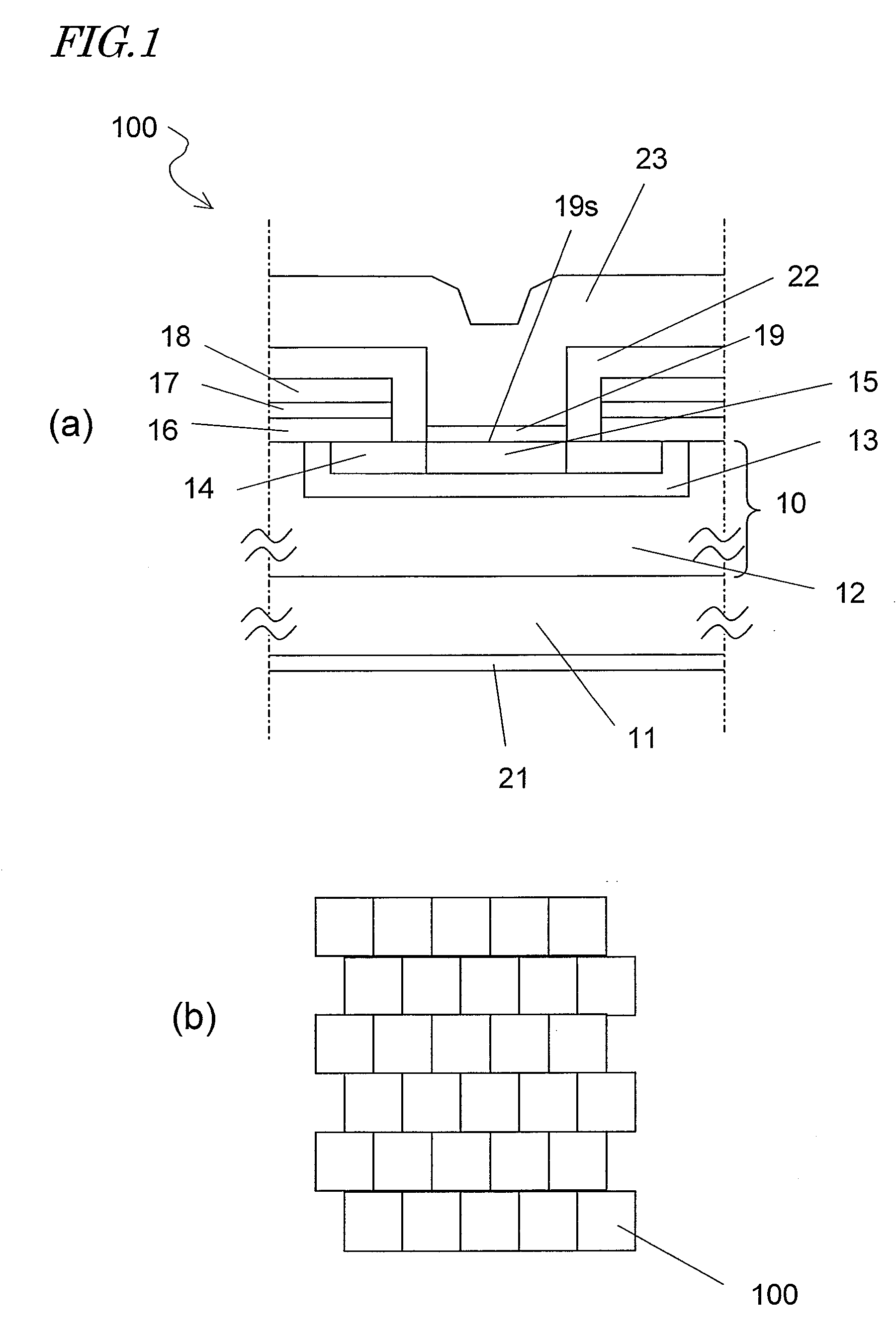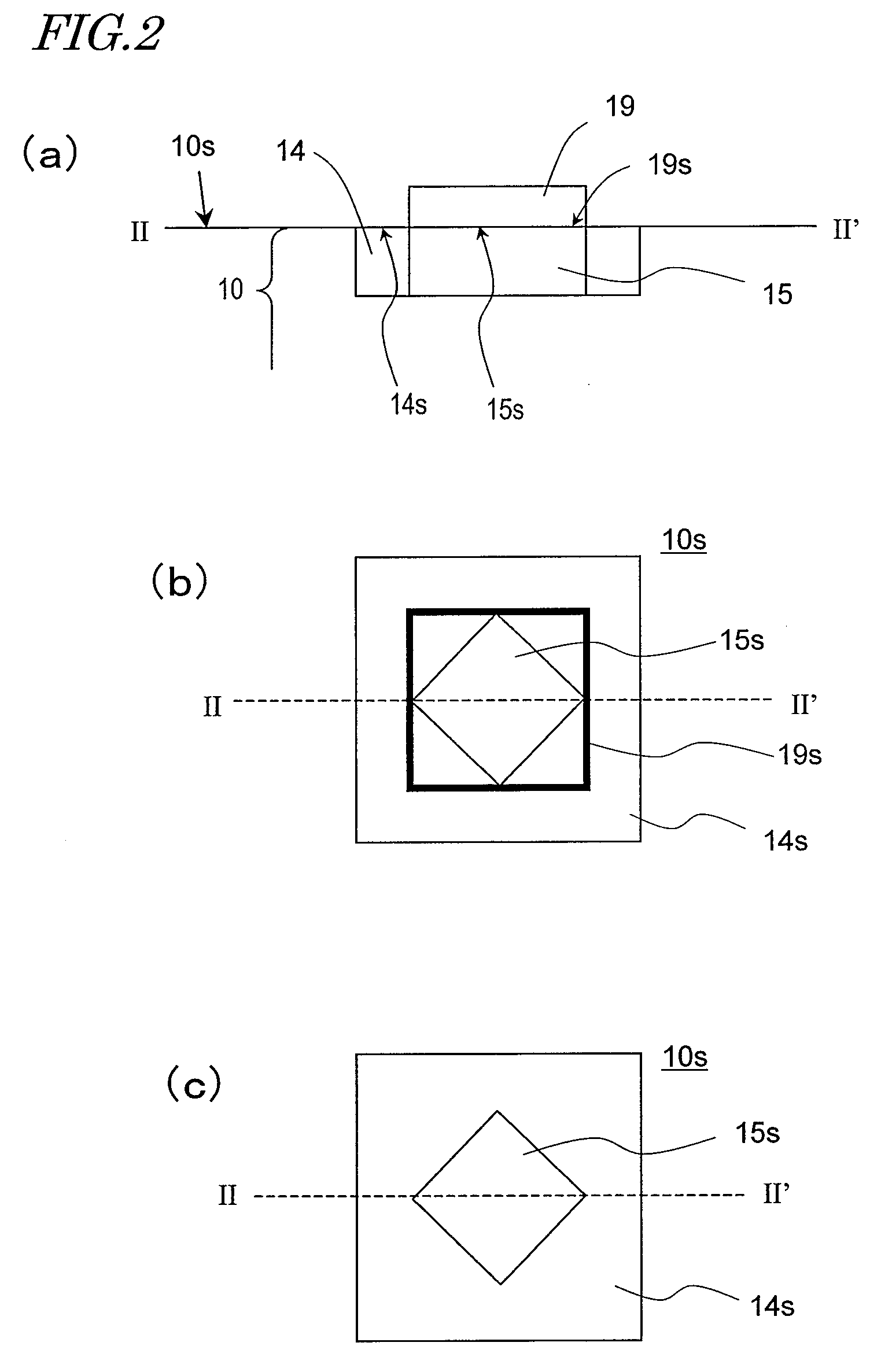Semiconductor element and method for manufacturing same
a technology of semiconductor elements and semiconductors, applied in the direction of semiconductor devices, basic electric elements, electrical equipment, etc., can solve the problems of reducing the efficiency of the device, affecting the performance of the device, so as to reduce the gate width, the effect of reducing the resistance or on-state current, and minimizing the deterioration of performan
- Summary
- Abstract
- Description
- Claims
- Application Information
AI Technical Summary
Benefits of technology
Problems solved by technology
Method used
Image
Examples
embodiment 1
[0094]Hereinafter, a First Specific Preferred Embodiment of a semiconductor device according to the present invention will be described with reference to the accompanying drawings. The semiconductor device of this preferred embodiment is a vertical MOSFET that uses silicon carbide.
[0095]The semiconductor device of this preferred embodiment includes at least one unit cell including a semiconductor layer, source and drain electrodes that are electrically connected to the semiconductor layer, and a gate electrode for use to switch the semiconductor device between ON and OFF states, and typically has a structure in which a number of such unit cells are arranged. In the following description, a semiconductor device consisting of a plurality of unit cells with a substantially quadrangular planar shape will be taken as an example.
[0096]FIGS. 1(a) and 1(b) are respectively a schematic cross-sectional view illustrating a unit cell of this preferred embodiment and a plan view illustrating an ...
embodiment 2
[0150]Hereinafter, a second preferred embodiment of a semiconductor device according to the present invention will be described with reference to the accompanying drawings. The semiconductor device of this preferred embodiment is a vertical MOSFET that uses silicon carbide but consists of striped unit cells unlike the counterpart shown in FIGS. 1 and 2. In the following description, a comb shaped MOSFET, unit cells of which have stripes that run perpendicularly to the direction in which electrons flow through the channel, will be described as an example.
[0151]FIG. 13(a) is a schematic cross-sectional view illustrating an exemplary unit cell as a second preferred embodiment of the present invention. FIG. 13(b) is a top view illustrating the arrangement of the unit cells in the semiconductor device of this preferred embodiment. For the sake of simplicity, any pair of components shown in both FIGS. 1(a) and 1(b) and FIGS. 13(a) and 13(b) and having substantially the same function is id...
PUM
 Login to View More
Login to View More Abstract
Description
Claims
Application Information
 Login to View More
Login to View More - R&D
- Intellectual Property
- Life Sciences
- Materials
- Tech Scout
- Unparalleled Data Quality
- Higher Quality Content
- 60% Fewer Hallucinations
Browse by: Latest US Patents, China's latest patents, Technical Efficacy Thesaurus, Application Domain, Technology Topic, Popular Technical Reports.
© 2025 PatSnap. All rights reserved.Legal|Privacy policy|Modern Slavery Act Transparency Statement|Sitemap|About US| Contact US: help@patsnap.com



